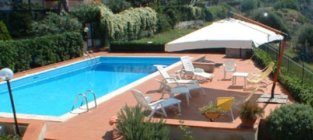| |
Noto
In a region populated by olive and almond trees, Noto sits on a plateau dominating the valley of the Asinaro and its citrus plantations. This tiny Baroque jewel endowed with an opulent beauty is the result of a single tragic event: the earthquake of 1693, that, despite bringing death and destruction to this part of Sicily, also sparked a huge effort to rebuild. Previously, the town that stood some 9-10km away (see below Noto Antica) had its origins way back in Antiquity. lt witnessed the birth of Ducetius who, in the 5C, made the Greeks quake in their shoes for having incited the Siculi against his Sicilian nationalist movement. The 1693 earthquake completely destroyed the old town. A broader and less vulnerable site was chosen for the new town, one that might accommodate a straightforward, linear town plan, with intersections at right angles and wide, parallel streets in accordance with the new Baroque taste. Three of the main streets run on an east to west axis, so that they might always be bathed in sunshine.
Three different social categories were catered for: the highest part was reserved for the nobility, the centre for the clergy (all except the hundred-year-old Palazzo Landolina), while the ordinary people were left to fill the rest of the town. Uniformly, the buildings are majestic: all are built of the soft, compacted limestone found locally that loses its glaring whiteness with time as a glorious patina develops imparting a magnificent golden or rosy hue to each facet especially when
these are caught in the last rays of the setting sun. Many Sicilian artists co-operated in the reconstruction of Noto conducted under the supervision of the Duke of Camastra, the acting representative of the Spanish viceroy; these included Paolo Labisi, Vincenzo Sinatra and Rosario
Gagliardi who, being a close follower of Borromini, was perhaps one of the most inventive. The town was built like a stage set might be: its perspectives were configured and implemented in an entirely original way, flattered and enhanced with curvaceous forms and curvilinear accents in fašades, decorated brackets and keystones, curlicues and volutes, masks, cherubs and balconies with gracefully bulging wrought-iron railings. Although Noto was rebuilt entirely by local craftsmen, it
fits into a much larger picture as Italian hands modelled, fashioned and realised expressions of the Baroque movement all over Europe and beyond to the new Russian capital, St Petersburg.
Through the streets ľ Throughout the 18C rectilinear town centre layout, popular districts have sprung up (Agliastrello, Mannarazze, Macchina Ghiaccio, Carmine) among the tightly-knit, tortuous and often maze-like streets more usually associated with medieval towns. The Allakatalla
association not only provides guided tours of the historic quarters, but also organises "alternative" routes coloured with local stories and popular legend. These veritable leaps into the past are even more captivating in the evening, when the subdued light casts an almost magical atmosphere. Allakatalla, 10/3 Largo Porta Reale tel. 0931-8350050.
|





